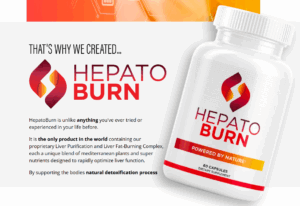Yoga Sequences for Flexibility
Yoga sequences for flexibility improvement offer a powerful method to enhance your body’s mobility and range of motion. These routines are not only beneficial for seasoned practitioners but also perfect for beginners looking to increase their flexibility. Focusing on specific postures, these sequences target tight muscles and joints, providing a comprehensive workout that fosters ease of movement and reduces stiffness. As you delve into these sequences, you will discover a harmonious blend of breath, movement, and mindfulness that unlocks hidden potential in your body. Whether you’re looking to touch your toes or stretch deeper into your yoga practice, these sequences are designed to cater to your need for flexibility, supporting your holistic wellness journey.
Foundational Poses for Flexibility
Improving your flexibility through yoga begins with mastering foundational poses. These poses are integral for stretching and lengthening muscles, paving the way for more advanced sequences. Each foundational pose offers unique benefits that collectively enhance overall flexibility and mobility.
Standing Forward Bend (Uttanasana)
This pose is crucial for stretching the hamstrings, calves, and hips. By bending forward, you release tension in the spine and neck. Begin by standing tall, then hinge at the hips to fold forward. Imagine elongating your spine with each breath. Consistent practice of Uttanasana helps increase hamstring flexibility and aids in releasing stored tension.
Downward Facing Dog (Adho Mukha Svanasana)
As one of yoga’s most recognized poses, Downward Dog stretches the shoulders, hamstrings, calves, and arches of the feet while strengthening the arms and legs. Start in a plank position, lifting your hips to create an inverted ‘V’ shape. Press your heels toward the mat and spread your fingers for balance. This pose enhances strength and flexibility, making it a cornerstone of any yoga sequence.
Cat-Cow Pose (Marjaryasana-Bitilasana)
This gentle, flowing movement helps stretch the back and torso. By moving between the cat and cow positions, you increase spinal flexibility and build core strength. Start on all fours, then alternate between arching your back (cat) and dropping your belly (cow), syncing movements with your breath. The Cat-Cow Pose is excellent for warming up the spine and soothing back tension.
Seated Forward Bend (Paschimottanasana)
This pose focuses on stretching the spine, shoulders, and hamstrings. Sit with your legs extended in front of you and hinge forward at the hips, reaching toward your toes. It fosters flexibility in the back and the legs, offering a deep stretch that complements the benefits gained from the Standing Forward Bend.
Finally, incorporating these foundational poses into your routine not only builds the groundwork for advanced sequences but significantly enhances your body’s flexibility. If you’re interested in discovering more exercises to incorporate into your routine, check out our best home workouts for beginners, which can further complement your yoga practice and bolster your fitness journey.
Dynamic Flow Sequences
Dynamic flow sequences align each movement with breath, unveiling the path to improved flexibility. This practice, known as vinyasa, not only connects the body to the breath but also keeps internal heat burning to enhance joint mobility. The rhythmic transition between poses is key. By flowing seamlessly from one position to another, the body warms, allowing muscles and connective tissues to open up, facilitating deeper stretches and improved flexibility.
In a typical dynamic flow, you might start in Mountain Pose, inhaling deeply to elongate the spine. On your exhale, move slowly into a Forward Fold, gradually deepening the stretch. Transition through a series of poses, such as Downward Dog or Warrior II, each accompanied by deliberate breath patterns. These transitions maintain warmth and energy, sustaining that vital heat essential for pliability.
To optimize your practice, balance is crucial. By integrating challenging poses and attending to the nuances of each shift, you can target different muscle groups, enhancing flexibility in a balanced manner. Each inhale summons energy; each exhale releases tension, creating a meditative dance that supports both flexibility and peace of mind.
Engage with foundational sequences that focus on full-body involvement. This comprehensive engagement not only targets the obvious tight spots like hamstrings but also activates smaller muscle groups that contribute to overall flexibility. As you become comfortable, introduce more complex sequences, exploring variations that push your boundaries.
It’s vital to listen to your body. Awareness during each transition helps prevent strain and injury, promoting a sustainable practice. Gradually, you’ll notice improved posture, increased range of motion, and better muscle strength. These benefits extend beyond the mat, contributing to enhanced daily life activities.
If you’re looking to enrich your home practice with effective dynamic sequences, consider integrating it with other fitness routines. Pairing yoga with home workouts for beginners can create a balanced fitness regimen that supports flexibility and overall wellness. Dive into the practice with patience, and allow these dynamic flows to unlock your body’s full potential.
Hepato Burn Product
Deep Stretch Routines
When it comes to enhancing flexibility, deep stretch routines hold a special place in my practice. These sequences focus on holding poses for extended periods, inviting both mind and body into a deeper state of relaxation and release. The key to these routines is time. By maintaining stretches, we allow our muscles to slowly unwind, tackling even the most stubborn areas. This method targets deeper muscle layers, specifically the connective tissues such as fascia.
A consistent practice of deep stretching aids in improving joint flexibility. Poses like Pigeon Pose, Dragon Pose, or Reclined Hero Pose can be held for several minutes each. These poses not only stretch the hips and thighs but also increase the range of motion in the hips—a common area of tension for many.
Let’s talk about why holding a pose longer matters. As we sustain stretches, the ligaments and tendons begin to lengthen. This doesn’t just help with flexibility; it also bolsters joint health, reducing stiffness and the risk of injury. Remember, flexibility isn’t just about bending your body; it’s about promoting overall wellness.
In these routines, the breath becomes our most valuable tool. Focusing on deep, slow inhalations and exhalations while in the pose enhances the stretch and increases relaxation. The connection between breath and movement reduces muscle tension and aids in releasing psychological stress.
For those new to deep stretch routines, it might be beneficial to incorporate props like blocks or straps to safely enter and hold poses. This can prevent strain and allow for deeper exploration of the pose. Practitioners often find their flexibility improves significantly faster when they commit to these deep stretches regularly, complementing more dynamic forms of exercise.
Incorporating these slower-paced routines into a regular schedule can be an antidote to muscle tightness. For those interested in a well-rounded approach to fitness, consider leveraging our free workout apps for home exercise to balance between flexibility and more vigorous workouts. This harmonious balance propels the body towards its full potential, thriving in flexibility and strength.
Incorporating Props for Flexibility
Enhancing flexibility with yoga requires a thoughtful approach, and incorporating props can significantly facilitate your progress. Props like blocks, straps, and bolsters aren’t just for beginners; they offer a way to deepen your practice and safely shift past your limitations.
Blocks are a versatile tool in any yoga practice. They can bring the ground closer to you for poses like Trikonasana (Triangle Pose) or offer support when you’re feeling tight. By placing a block under your hand, you can maintain correct alignment, preventing over-straining and allowing for a gradual increase in flexibility.
Straps can be transformative, especially for those with limited range of motion. In poses like Paschimottanasana (Seated Forward Bend) or Gomukhasana (Cow Face Pose), straps enable you to reach a little further. By looping a strap around your feet or hands, you can maintain an engaged posture without compromising form—eventually enhancing your flexibility.
Bolsters offer a gentle way to support the body in restorative postures. Using a bolster in poses like Supta Baddha Konasana (Reclining Bound Angle Pose) provides the support needed to relax deeply, easing the body into flexible potential over time. Bolsters promote a relaxed and passive stretch that encourages flexibility in a soothing manner.
Props provide the opportunity to experiment with poses you might have thought impossible. Through consistent use, you’ll notice an increase in flexibility and confidence in your practice. Adapting poses with props allows for safe exploration of new movements, making yoga accessible to everyone.
Integration of props isn’t just beneficial for flexibility. For a well-rounded fitness regime, consider incorporating yoga into other disciplines such as High-Intensity Interval Training, known for optimizing overall health and wellness. Master HIIT routines to complement your flexibility-focused yoga practice for a robust approach to fitness.
Whether you’ve just started exploring yoga or you’ve been practicing for years, props are invaluable in guiding you towards greater flexibility. Embrace them as part of your yoga toolkit, and watch as they unlock possibilities you once deemed unattainable.
Final words Yoga Sequences for Flexibility
Through these yoga sequences for flexibility improvement, you’ll find a path toward greater ease and confidence in both your practice and everyday activities. Each sequence opens new opportunities to explore the capabilities of your body, allowing for a comprehensive flexibility gain that supports both physical health and mental well-being. I encourage you to continue exploring these sequences and incorporate them into your routine regularly. With dedication, you will experience significant improvements in your flexibility. Keep visiting our site for more insights into yoga and health.




